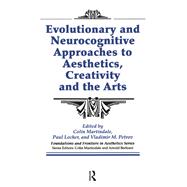
What is included with this book?
| What art is and what art does : an overview of contemporary evolutionary hypotheses | p. 1 |
| An evolutionary model of artistic and musical creativity | p. 15 |
| The adaptive function of literature | p. 31 |
| Does reading literature make people happy? | p. 47 |
| Cognitive poetics and poetry recital | p. 65 |
| The alphabet and creativity : implications for East Asia | p. 89 |
| Creativity, gender, history, and the authors of fantasy for children | p. 101 |
| Trends in the creative content of scientific journals : good, but not as good! | p. 117 |
| The information approach to human sciences, especially aesthetics | p. 129 |
| Art and cognition : cognitive processes in art appreciation | p. 149 |
| Literary creativity : a neuropsychoanalytic view | p. 165 |
| A neural-network theory of beauty | p. 181 |
| Neural correlates of creative cognition | p. 195 |
| Creativity, DNA, and cerebral blood flow | p. 209 |
| Artistic creativity and affective disorders : are they connected? | p. 225 |
| Table of Contents provided by Blackwell. All Rights Reserved. |
The New copy of this book will include any supplemental materials advertised. Please check the title of the book to determine if it should include any access cards, study guides, lab manuals, CDs, etc.
The Used, Rental and eBook copies of this book are not guaranteed to include any supplemental materials. Typically, only the book itself is included. This is true even if the title states it includes any access cards, study guides, lab manuals, CDs, etc.